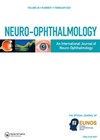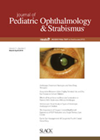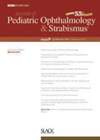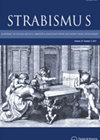You searched for "IIH"
Typical or surprisingly uncharacteristic presentations of neuro-ophthalmic emergencies
Irrespective of geographical location or patient cohort, emergency departments are high risk locations capable of inspiring extreme anxiety and dread in patients and doctors alike. The stress multiplies when a walk-in or referred case is suspected of underlying neurological pathology....Headache: the clue is in the eyes
1 October 2021
| Parushak Rezai, Aleksandra Pekacka
|
EYE - Neuro-ophthalmology, EYE - Imaging, EYE - General
A worrying cause of headache is raised intracranial pressure (ICP). Papilloedema is a vital clue for accurate diagnosis and performing fundoscopy is essential in detecting this sign. The authors review the use of fundoscopy in their own district general hospital....
Sub-clinical detection methods in multiple sclerosis
3 April 2023
| Claire Howard
|
EYE - Neuro-ophthalmology
|
Subclinical multiple sclerosis, axonal degeneration, frequency-doubling perimetry, optic neuritis, optical coherence tomography, standard automated perimetry
Visually symptomatic multiple sclerosis (MS) provides only part of the required information to assist in understanding the disease. Recently, researchers have concentrated their efforts on diagnosing MS cases in the subclinical period. The aim of this paper was to assess...
Sunflower Scotland delivers aid to Ukraine
Sunflower Scotland has been helping Ukraine since the second week of the war, first as volunteers and later as a registered charity.Third nerve palsy
1 August 2017
|
EYE - Neuro-ophthalmology, EYE - General
Case scenarios A 71-year-old female presented to a nearby eye emergency unit with two days history of partial ptosis in her left eye with diplopia. She saw her GP earlier that day and he asked her to go to the...
Choroidal defects in neurofibromatosis
The aim of this study was to investigate the frequency of choroidal abnormalities using infrared reflectance imaging with optical coherence tomography (OCT) in paediatric patients with neurofibromatosis (NF) type 1. Thirty-eight eyes of 19 patients were reviewed. NF1 was diagnosed...An update on inherited retinal disorders (part 2): Approaches to therapy for IRDs
1 December 2016
| Stacey Strong, Michel Michaelides (Prof)
|
EYE - Vitreo-Retinal
Part 1 of this topic can be found here There are currently no proven cures for inherited retinal disease (IRD). However, multiple avenues of research are being investigated to better understand disease mechanisms and trial potential therapies that may slow...
Choroid changes in amblyopic, fellow and control eyes
In this study the authors aimed to evaluate choroidal changes in the hyperopic anisometropic eyes of children by comparing amblyopic and fellow eyes, and control eyes, using a binarization method – analysis of enhanced depth imaging with OCT (EDI-OCT) using...Quiz Dec/Jan 2020
2 December 2019
History A 69-year-old female patient was referred to the uveitis clinic from her local district general hospital with a left posterior uveitis which had been unresponsive to high dose steroids. She had no other previous ophthalmic history nor significant systems...
Evolving towards an interventional glaucoma mindset
2 February 2024
| Gus Gazzard (Prof), Jan Beiting
|
EYE - Glaucoma
Traditionally, a newly diagnosed glaucoma patient would be treated first with medical therapy. As the disease progressed or the initial intervention failed to adequately control intraocular pressure (IOP), clinicians would add more drops, selective laser trabeculoplasty (SLT), repeated SLT and...
Ocular neuromyotonia features
The authors present eight cases of ocular neuromyotonia (ONM) with an overview of the pathophysiology, aetiology, clinical presentations and possible treatments. Diagnosis was made only after thorough and repeated orthoptic examinations and review of medication history. An overview of the...My top five: Innovative approaches to dry AMD
2 February 2024
| Nikhil Sharma
|
EYE - Vitreo-Retinal
Age-related macular degeneration (AMD) is one of the leading causes of irreversible blindness in the developing world with its prevalence rising alongside age. In societies characterised by ageing populations, it is imperative we explore more effective treatment to alleviate the...







